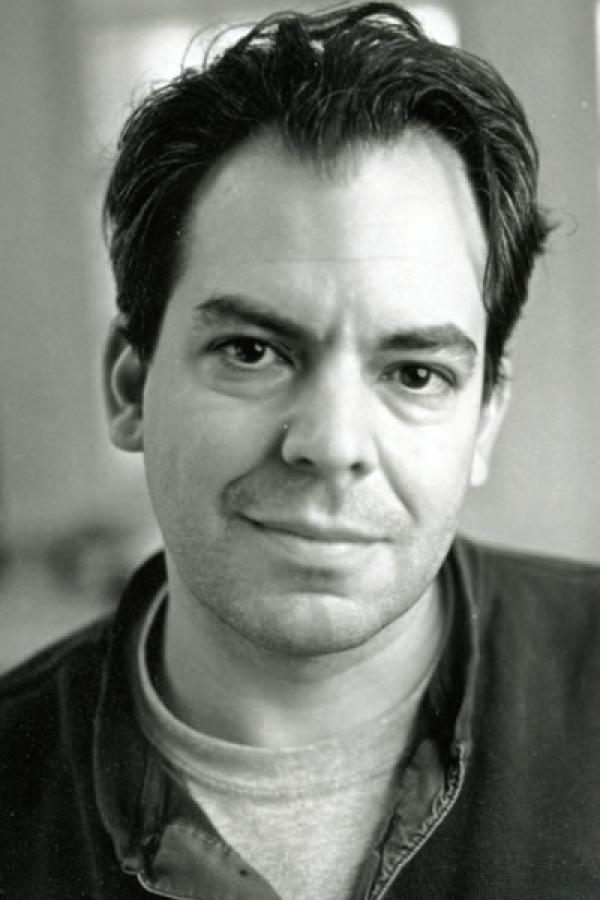Doug Dorst

Photo by Joanna Morrissey
Bio
Doug Dorst's first novel, Alive in Necropolis, will be published in July 2008 by Riverhead Books, with a story collection, The Surf Guru, to follow in 2009. A former Wallace Stegner Fellow at Stanford University and a graduate of the Iowa Writers' Workshop, he has also received fellowships from The James Michener/Copernicus Society and the MacDowell Colony. His short fiction has appeared in McSweeney's, Ploughshares, StoryQuarterly, The Atlantic Unbound, ZYZZYVA, Epoch, Five Points, and elsewhere. His first full-length play, The Monster in the Dark (a collaboration with foolsFURY Theater Company), will be produced in Berkeley and San Francisco in February and March 2008. He holds a B.A. from Stanford and a law degree from UC-Berkeley, and he has taught at Stanford, California College of the Arts, and St. Edward's University in Austin, Texas, where he is an assistant professor of creative writing.
Author's Statement
I'm honored and delighted to receive this Fellowship, which will allow me to focus my time and energy on researching and writing my next novel. It's a thrill, too, to know that the writers on the committee saw fit to recognize my work. I am truly grateful for these gifts of support and encouragement.
From the short story "Dinaburg's Cake"
After Dinaburg left for the airport, Kacy poured herself a glass of wine to celebrate. He'd told her he'd call as soon as he got the go-ahead from his wife. A January wedding at the Four Seasons. Five hundred guests, many of them wealthy and important: a software mogul from California; several congressmen; even Rudy Giuliani himself! It could be a real break for her. She'd be called for jobs in New York, Washington, San Francisco. She'd have to hire employees. Down the road, if April matured a little and stopped with the hair strangeness, maybe they could even work together, mother and daughter.
She drank the wine in three large sips and allowed herself the luxury of stretching out on the couch and closing her eyes. The wine spread warmth inside her, and the central air purred and breathed cool air over her skin. Five minutes of peace. Then, back to work: Marisol was coming to clean in the morning, and Kacy had to tidy up. She took the vacuum upstairs into April's bedroom. She opened the curtains, and golden afternoon sun lit the room. The pink walls were bare - no photos of friends, no posters of pop singers, no prints of horses, nothing. As if April were unwilling to let slip even the tiniest bit of information about who she was.
She pulled the bed away from the wall and looked behind the headboard. A layer of April's mouse-brown hair was spread over the baseboard molding and the carpet. Goddamnit. She'd expected this, but that didn't make it less of a disappointment. She kicked the vacuum on and watched the hair disappear into the nozzle as the motor whined. She cleaned it all up - every strand, as far as she could tell - and pushed the bed back into place.
Kacy had discovered the hair behind the bed when April was eleven. She'd stared at it for minutes, trying to understand how it had gotten there. There was only one explanation, hard as it was to believe: her daughter would lie in bed and pull her hair out, over and over and over. The image sickened her. It was the kind of behavior you'd expect of a sick dog or a lab rat, not a healthy young girl. She'd cried, then, right there on April's bed. After a while, she decided the best plan was to clean up the mess and keep mum. Her daughter wasn't a freak. Her daughter could work through problems on her own. And at least you couldn't see any bald spots.
Four years later, on the day of her mother's funeral, she noticed a patch of scalp in the center of April's head, just above the hairline, as obvious as a third eye. That night, she walked into the bathroom while April was brushing her teeth. She faced her daughter in the mirror, pointed to the bald spot, and said, "Do you want people to see this?" April stared at the reflection of the two of them while toothpaste foam leaked sadly from the corner of her mouth, until finally she squeezed her eyes shut and shook her head no. The next day, Kacy bought four hats and left them on April's bed. She could cover herself up until the hair grew back. It would be their secret, and they'd get through it together, the way Kacy and her own mother had when Kacy was seventeen and got pregnant in the bed of Tommy Odom's truck. She and Mother went to the doctor together, took care of business, and never spoke about it again.
April's hair grew back, but new bald patches had appeared on her head in cycles: at her temple; at her pate; in a ragged circle at the back of her head; then at the temple again, after the hair had grown back in. Kacy was reminded of cattle moving from pasture to pasture, grazing each space barren before moving on. And Roger? He'd never seemed to notice, and for her money, if he couldn't be bothered to pay attention to how his daughter looked, then he didn't deserve to be part of the solution.
It's a stage, Kacy reminded herself. She'll grow out of it, and later, she'll be amazed that she ever did this to herself. She went to close the curtains and paused at the window. A hummingbird darted between honeysuckle blossoms. Next door, Mr. Weeks, a bent and sun-scorched old man, was tending his tomatoes. Through the trees, a sliver of Town Lake sparkled in the sun. A world of whites and golds and greens where nothing was hopeless, where no cause was lost.
"Dinaburg's Cake" first appeared in StoryQuarterly.

